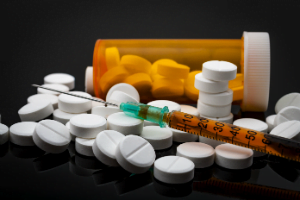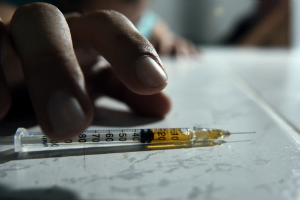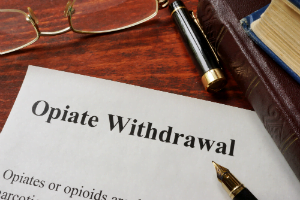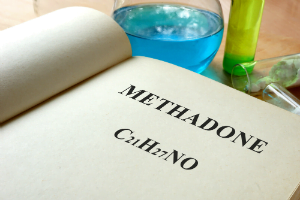7 Things You Need to Know About Tapering Off Methadone
Over 2 million people in the U.S. abuse opioids. Methadone is used as a prescription drug to fight opioid addiction.
Methadone relieves pain and prevents opioid withdrawal symptoms. Most methadone treatment programs keep patients on the drug longterm. This is because research shows that patients on methadone are less likely to relapse.
But what if you’re ready for complete recovery?
Here are 7 things you need to know about tapering off methadone.
Process of Addiction
Pharmaceutical companies convinced doctors that addiction to opioid pain relievers was uncommon. This occurred in the 1990s. This led doctors to prescribe pain medication at greater rates than before.
This caused an uptick in the number of people using opioid medications. Unfortunately, patients with pain often become tolerant to normal doses of medication. They need higher doses of medication to stop the pain.
When their prescription runs out, many patients turn to illegal opioids for self-medication.
Opioids bind to receptors in the brain blocking pain and causing a dopamine rush. The dopamine rush is addictive because it causes pleasure and relaxation. Over time, brain chemistry alters and becomes damaged.
When it comes to weaning from the opioids, methadone is the drug of choice. It prevents withdrawal symptoms because its effects are slower than other painkillers. Weaning from methadone isn’t easy since it’s also an opioid.
Freedom of Choice
Many treatment programs never mention methadone weaning. They prefer indefinite treatment with methadone so patients avoid relapse. This means patients have no choice when it comes to their treatment plans.
That’s unfortunate since long-term methadone use has potential unhealthy side effects. Methadone is also sometimes fatal with thousands of deaths each year from an overdose.
In studies, methadone side effects show that it can affect both memory and learning. In rats, there were brain cell changes even after the methadone was no longer in the body. Attention spans were also shortened.
Tapering Off Methadone
If you’re ready to taper off methadone, what’s the best way?
Never stop methadone treatment cold turkey. Always taper under the supervision of a doctor.
Although methadone eases withdrawal symptoms from other opiates, it also has withdrawal symptoms.
Methadone withdrawal symptoms include:
- Depression
- Difficulty sleeping and insomnia
- Agitation
- Anxiety
- Profuse sweating
- Nausea and vomiting
- Diarrhea
- Stomach cramps
- Shivering
- Rhinorrhea (a runny nose)
Methadone withdrawal symptoms sometimes last longer than opioid withdrawal symptoms.
1. Find a Counselor
You’ll need a counselor or therapist. Many therapists specialize in addiction treatment. Meet with the counselor on a regular basis. If you don’t have the means for a counselor, get into an appropriate 12-step program.
You’ll need a good support system. Sometimes family members aren’t the best support and can even undermine your attempts at detox. Surround yourself with people who won’t sabotage your efforts.
2. Address Life Issues First
Reduce your stress before tapering.
Focus on life basics such as a job, a place to live, and marriage issues first. Work on healthy habits. Work through emotional triggers such as losses caused by opioid use.
Many drug abusers lose everything before getting off drugs and onto methadone maintenance. If these issues aren’t addressed first, opioid relapse is more likely after tapering.
Address the spiritual and emotional problems caused by drug addiction. Get your finances in order.
3. Healthy Lifestyle Changes
Make healthy lifestyle changes. Increase your exercise. Adopt a healthy eating plan with lots of fruits, vegetables, whole grains, and protein.
Stay hydrated by drinking at least half your body weight in water daily. If you weight 150 pounds, drink 75 ounces of water per day.
Take a multivitamin.
4. Be Patient
It could take a year or more when implementing healthy lifestyle changes. Be patient. Don’t begin tapering off methadone until you’re ready. Don’t rush the tapering process itself either.
Tapering off methadone takes about three months. To taper means cutting the dose down every week or every other week.
Overall, tapering from methadone has a success rate between 25-50%. The more prepared you are the more likely you’ll succeed.
If you’re taking 10 mg of methadone once per day, your dose is lowered to 8 mg at the end of week two of tapering. At the end of week four, the dosage is lowered to 6 mg.
The dose is lowered to 4 mg, then 2 mg, and then stopped. Most methadone tapers reduce the drug by about 20% every two weeks.
Research shows that slow tapering is more successful than tapering too fast. Remember that methadone stays in the body for as much as two weeks after the last dose.
The process of tapering may take a few months. But the process of being drug-free lasts a lifetime. Be patient with yourself.
5. Use an Experienced Doctor
Use a doctor with experience in addiction and drug withdrawal. You need a doctor who understands the treatment of withdrawal symptoms.
The doctor can prescribe other medications that help ease withdrawal symptoms. Your doctor may prescribe anti-anxiety medications.
If you’re having nausea and vomiting, the doctor can prescribe anti-emetics. These drugs relieve nausea.
6. Decide Where You’ll Detox
You can detox at home or in a treatment center. There are benefits and risks with both options. The familiarity of home is nice.
But quick access to experienced doctors and nurses in a treatment center is a plus.
Talk to your counselor and doctor about what the best option is for you and your situation.
7. Consider Alternative Adjunct Treatments
Some withdrawal symptoms cause problems of their own. Some patients have trouble sleeping during or after methadone withdrawal.
Sleep deprivation causes its own set of problems. It also sets you up for a drug relapse.
If you’re having trouble with symptoms such as sleeplessness, consider alternatives to drugs. Meditation, prayers, and acupuncture are non-drug alternatives that work well for many patients.
In The End, You Must Persevere!
Detoxing from drugs is difficult. There are no easy solutions or magic pills. Coming off methadone is a process. Set yourself up for success before you start tapering.
Get a good addiction counselor. Address your most difficult life issues and triggers and adopt healthy lifestyle changes. Consider alternative treatments for issues that present during the tapering process.
Now that you’re drug-free, enjoy your life’s journey! Looking for more information about drug addiction and detox? Find more information about opioid addiction here.
Sources
[1] American Psychiatric Association. (2017, January). What Is Addiction? Retrieved from American Psychiatric Association: https://www.psychiatry.org/patients-families/addiction/what-is-addiction [2] Medical News Today. (2011, March 24). Possible Harmful Effects From Prolonged Use of Methadone. Retrieved from Medical News Today: https://www.medicalnewstoday.com/releases/220086.php [3] U.S. Department of Health & Human Services. (2019, January 22). What Is The U.S. Opioid Epidemic? Retrieved from U.S. Department of Health & Human Services: https://www.hhs.gov/opioids/about-the-epidemic/index.html




 This was how I was first
This was how I was first 

 Maintenance medication programs are only used under very specific circumstances. You’ll need to go through a rehab program and be approved for this type of treatment. It’s important to trust your doctors and your rehab support staff. Be completely honest with them, and don’t be afraid to take that next step.
Maintenance medication programs are only used under very specific circumstances. You’ll need to go through a rehab program and be approved for this type of treatment. It’s important to trust your doctors and your rehab support staff. Be completely honest with them, and don’t be afraid to take that next step. I’ve discovered that I don’t feel high when I take this medication, but it does help me to stop thinking about using drugs like heroin or prescription painkillers all the time. It allows you to be free of the all-consuming addiction that ran your life for so long.
I’ve discovered that I don’t feel high when I take this medication, but it does help me to stop thinking about using drugs like heroin or prescription painkillers all the time. It allows you to be free of the all-consuming addiction that ran your life for so long.
